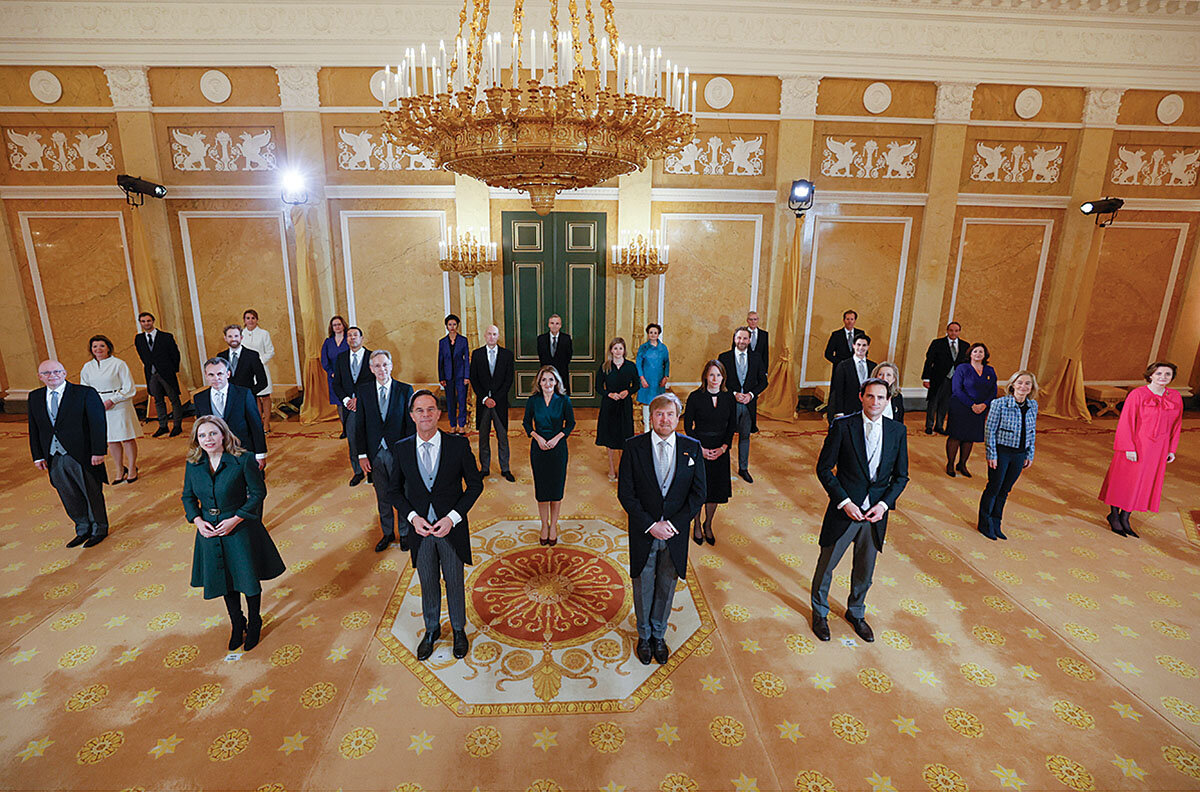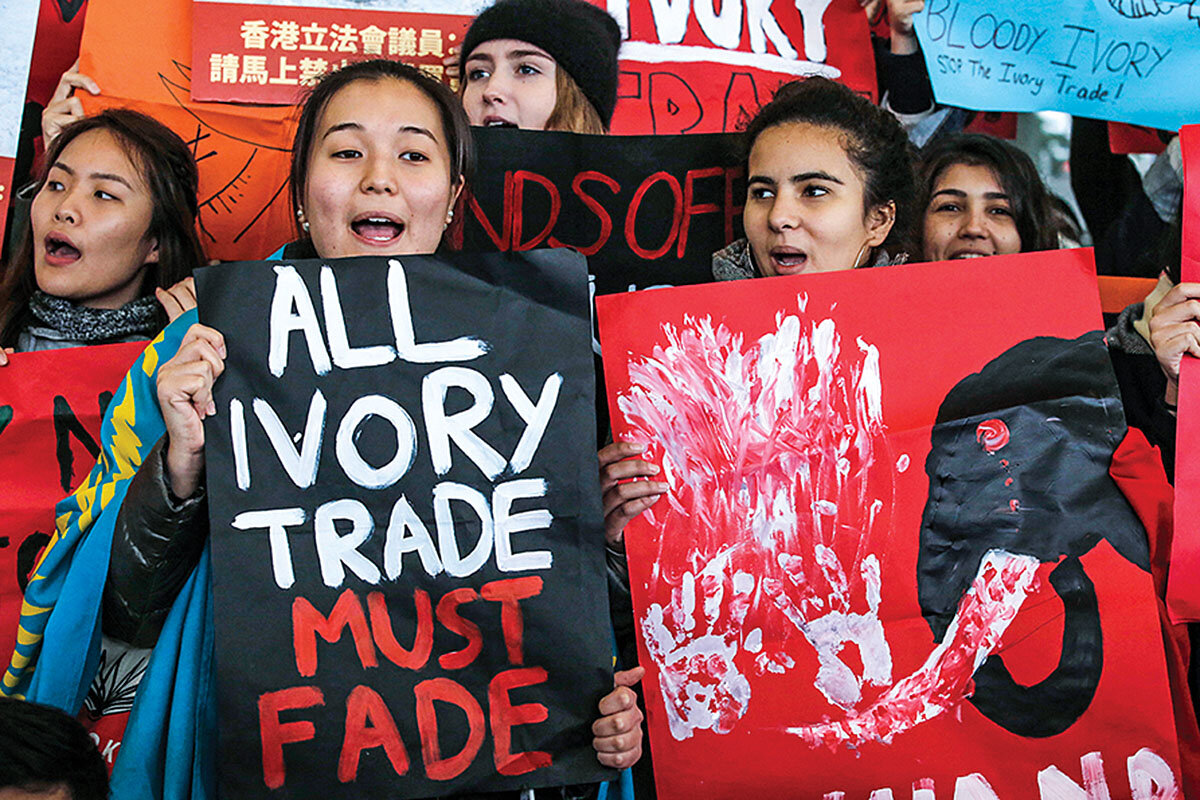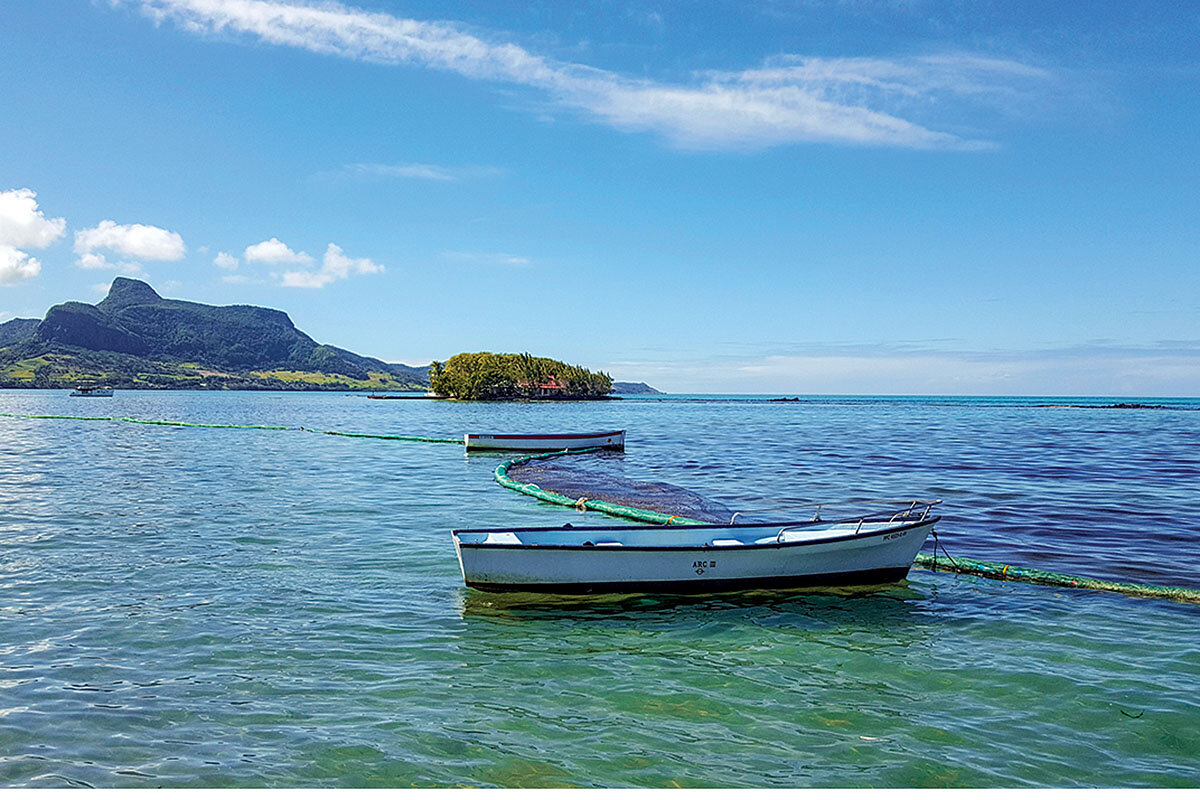Shut the door, and stay out of the way: Strategies to help wild animals
Loading...
In Costa Rica, photographic evidence proved that conservation measures worked, and showed that better protections against human activity improved wildlife recovery. We also take a look at a multinational effort to protect the ocean and the growing role of women in Dutch government.
1. Costa Rica
Central America’s largest camera trap study to date proves Costa Rica’s conservation efforts successful. The Osa Peninsula, off Costa Rica’s southern Pacific coast, is one of the last sites in the region that’s home to a wide variety of rare wildlife, including elusive species of cats like jaguars, pumas, ocelots, margays, and jaguarundis. But in recent decades, human activity has created a tenuous situation for these animals.
Why We Wrote This
Guardrails on human behavior promote animal survival – from restricting the ivory trade at a major thruway city like Hong Kong, to keeping people out of natural animal habitats in Costa Rica.
So in early 2018, researchers partnered with local community organizations to set up 240 motion-triggered cameras across the peninsula. “Conducting a study of this magnitude is a logistical nightmare, but they could pull it off because of their strong relationships and collaborations,” said John Poulsen of Duke University, who was not involved in the study.
After sorting through 13,600 detections, they discovered that many species thought to be in decline had recovered over the past 30 years. Areas better protected from human activity offered more signs of diverse wildlife, including the largest cats, which scientists consider “indicator species” of ecosystem health. “The results were maybe not surprising,” said Dr. Poulsen. But the data show that “humans have an immense effect on animal communities, favoring smaller species, and dramatically reducing the distribution and abundance of large species.”
Mongabay
2. Netherlands
In a historic first, women have achieved gender parity in the Dutch government. The new government was sworn into office on Jan. 10 after nine months of negotiations. Of 29 ministers and secretaries of state, 14 are women. Those include Dilan Yesilgoz-Zegerius as the minister of justice and security, Kajsa Ollongren Dilan as the defense minister, and Sigrid Kaag as the new finance minister.
While Germany’s new Cabinet is also 50% women, that level of gender parity is still unusual. Twenty-one percent of government ministers around the world were women at the end of 2019. In the United States, women currently hold 27% of seats in Congress. Advocates warn that the mere presence of women in government isn’t enough to bring about true gender equality – which requires a deeper shift in societal norms and values – but note that equal representation is a good place to start.
Al Jazeera
3. Brazil
Solar power is providing energy and economic opportunity to a Brazilian village – while protecting local forests. Long outages used to be commonplace in Santa Helena do Inglês, a riverside community of around 130 residents in the Amazon, reachable only by boat. Like many remote communities, it was dependent on diesel generators or vulnerable power lines that cut through forest. Last June, in the first of four pilot projects in the Amazon, the Sustainable Amazon Foundation and energy company Unicoba gifted the town 132 solar panels, 54 lithium batteries, and nine hybrid inverters to unfurl clean energy in the region.
Brazil has been slow to take up solar power, which makes up only around 2% of its energy mix. But falling prices for the technology are expected to help facilitate adoption. In places like Santa Helena do Inglês, once a hub for illegal logging, solar power benefits residents, fishers, and small businesses – including a women-led ecolodge that had previously lost customers due to insufficient power. “It’s made a huge difference already,” said Pedro Vidal de Mendonça, the owner of a tiny grocery store. “Now, as long as the sun is shining, we know that the power won’t go out.”
Mongabay
4. China
Hong Kong, a mainstay of the global ivory trade, has banned the sale of commercial ivory products. Ivory – most of it from Africa – has long been a symbol of status in China. Because demand continues to be high, the industry as a whole is estimated to be worth around $23 billion a year. Hong Kong, a convenient point of transit for illegal goods headed to mainland China, earned a reputation as a hub of ivory production in the 1970s and ’80s; now, the government is trying to change that.
Hong Kong’s law went into effect Jan. 1, building upon China’s 2018 ban and a gradual phaseout agreed to by local lawmakers, in the hopes of finally ending the ivory trade and protecting elephants. Under the ban, the “import, re-export, and commercial possession of elephant ivory” is outlawed in Hong Kong, and offenders face a maximum fine of $1.3 million and 10 years’ imprisonment. Given concerns that the ban could lead to commercial ivory being reclassified as private and sold legally in antiques markets, the international organization Traffic recommends a management system to register and audit privately held ivory as well.
Agence France-Presse, Bloomberg
5. Western Indian Ocean
Ten countries have joined to form a first-of-its-kind network of marine conservation areas in the Western Indian Ocean. Fifty years ago, these waters were relatively virgin. Now, with the region having a coastal population of 69 million, overfishing, pollution, and climate change have become increasingly worrisome threats. The collaboration, known as the Great Blue Wall, is part of a global plan to protect 30% of the world’s oceans by 2030. Right now, only around 5% to 8% of the Indian Ocean is formally protected. The pact will promote sustainable use by communities and protect coral reefs, mangroves, and seagrass meadows crucial for the health of the ocean.
Supported by the governments of Comoros, Kenya, Madagascar, Mauritius, Mozambique, Seychelles, Somalia, South Africa, Tanzania, and France (representing the island of Réunion), the effort is modeled after Africa’s Great Green Wall, a plan to plant a 10-mile-wide, 4,350-mile-long wall of trees from Senegal to Djibouti. As a group initiative, the pact may attract more international and private funding, with Ireland the first to commit a grant of €400,000 ($458,000). “Many countries ... do not have adequate financial resources to be able to implement their ocean management planning,” said Aboud S. Jumbe, an environmental scientist from the Tanzanian government. “So, any support or partnership for conserving and protecting the marine environment is appreciated.”
Mongabay









